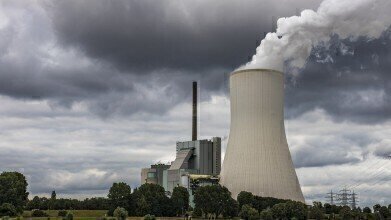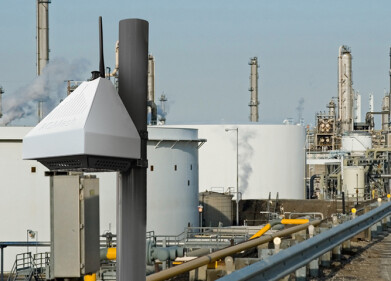Air Monitoring
Can Amine Emissions Be Reduced?
Aug 04 2022
For power plants, manufacturing sites and other industrial locations, cutting down carbon emissions without overhauling their operations has become a priority in recent years. Since it can be installed onto existing systems with minimal disruption, carbon capture and storage (CCS) technology has emerged as one of the most powerful means of boosting a site’s environmental credentials.
Amine-based solvents have proven to be one of the most popular methods of enabling CCS, due to their effectiveness and versatility in ambient conditions. However, it has been noted that amines can be emitted into the environment as part of the process, while amine degradation products have the potential to cause further problems. As such, researchers have been investigating ways to curb these emissions before they develop into greater issues.
Where do amine emissions come from?
Amine emissions can occur at various different stages of the CCS process. A majority of the emissions are likely to occur through the exhaust fumes of the system, with entrainment and vaporisation allowing amines to escape from the upper part of the absorber. Meanwhile, amine degradation products can also exit through this route as a result of impurities within the flue gas.
Meanwhile, emissions of both amine and amine degradation products can also come through leakages from hardware components, including the absorber, the stripper and the reboiler. Finally, insufficient filtration in the reclaimer can result in amines leaving the CCS system via the wastewater effluent.
How can amine emissions be reduced?
Each of these sources requires its own individual approach to reduce the associated emissions as far as possible. For example, introducing an additional water wash section prior to the release of the effluent from the reclaimer should be able to remove a significant percentage of amine impurities from both wastewater and airborne streams. Additionally, regular and robust maintenance of the hardware can minimise risk of leakage as much as possible.
However, plants are not currently required to monitor the amine emissions emanating from their CCS systems, meaning that there is a dearth of data on the concentrations of such substances in the air, water and soil surrounding industrial sites. With so many chemical compounds deriving from amine-based solvents, and so little information available on their existing emissions, it’s difficult for researchers to fully grasp whether the aforementioned steps are sufficient in limiting emissions.
A work in progress
As such, it’s imperative that further study is conducted into amine emissions, their potential impact on the natural world and the various mechanisms and technologies which can help to mitigate their spread. These knowledge gaps must be closed before the industry can implement amine-based CCS solutions at large scale without fear of long-term reprisals that could be counteractive for the health of the environment.
In summary, then, it is certainly possible to reduce amine emissions from CCS systems. However, in order to effectively do so, it must first be understood how serious an issue these types of emissions are at the present time. This will help to provide a yardstick against which existing and future reduction technologies can be measured to facilitate informed insight.
Digital Edition
IET 34.2 March 2024
March 2024
Gas Detection - Biogas batch fermentation system for laboratory use with automatic gas analysis in real time Water/Wastewater - Upcycling sensors for sustainable nature management - Prist...
View all digital editions
Events
Apr 17 2024 Guadalajara, Nexico
Apr 18 2024 Shanghai, China
Apr 22 2024 Hannover, Germany
Apr 22 2024 Marrakech, Morroco
Apr 23 2024 Kuala Lumpur, Malaysia


















